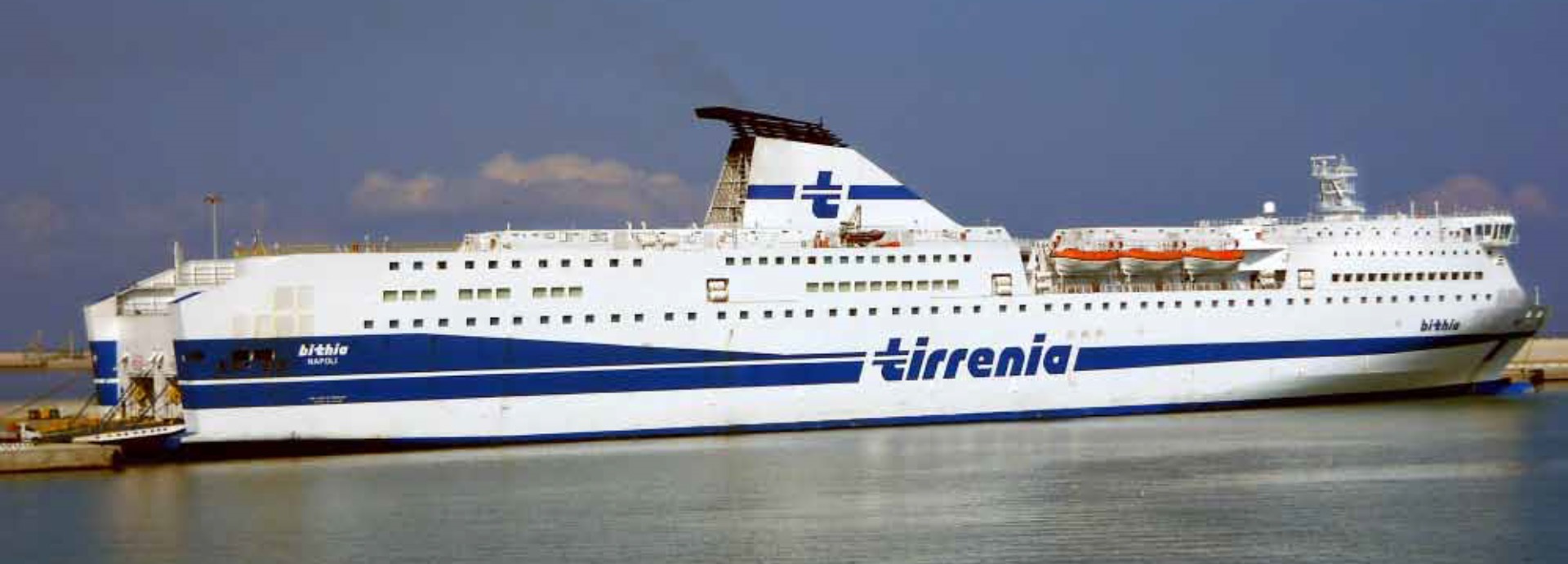
Case studies

High efficiency propulsion reduces fuel costs for cruise ferries
Compagnia Italiana di Navigazione (CIN) is an Italian, privately-owned shipping company. In 2012 the Italian Government privatised Tirrenia (the major Italian ferry company, founded in 1936) which was subsequently acquired by Compagnia Italiana di Navigazione.
Challenge
- Improving the propulsion efficiency
- Reducing fuel consumption and maintenance costs
Solution
- Installation of a high-efficiency propulsion system and related equipment, featuring 50 increased efficiency blades and expert installation supervision on board
Benefit
- Fuel savings of at least 10 %
- 50 % reduction of main engine overhaul costs
- 50 % reduction of lube oil and fluid costs
- Reduced environmental impact
CIN has a contract with the Italian Ministry of Transportation to provide an essential link between the mainland and the major islands of Sardinia, Sicily and Tremiti. CIN operates a fleet of 18 vessels and in 2014 the company started RoRo service
operations in the Red Sea area and the Spanish region.
Need for efficiency
A large part of Tirrenia’s fleet was built after the millennium shift with most of the vessels designed for high-speed operations at top speeds of around 29 knots. Although this kind of speed significantly shortens voyage times, the downside
is that it increases fuel consumption and consequently operating expenditures.
Since fuel costs amount to more than half of our OpEx, we came to the conclusion that we needed to take some action. We seriously wanted to reduce the fuel
consumption and engine maintenance costs in our vessels, says Vincenzo Leboffe. In the discussions with Wärtsilä, CIN received a proposal containing several options with different propulsion solutions. In short, Wärtsilä suggested
reducing the maximum speed from 29 to 27 or 24 knots and installing new efficiency blades, optimized for 21 Knots with a maximum attainable speed of 24 knots in 2 engine mode. With this configuration, Wärtsilä was able to guarantee an
increase in propulsion efficiency, resulting in at least 10% reduction in fuel consumption. In addition a considerable reduction in noise and vibration could be guaranteed.
After several evaluations of the alternatives we had, we considered
Wärtsilä’s solution to be the best; and they are also the original manufacturer of the propulsion system, says Mr Leboffe. In May 2014 Tirrenia decided to order a high-efficiency propulsion system and related equipment to five
of their ferries: M/V Bithia, M/V Athara, M/V Janas, M/V Nuraghes and M/V Sharden. The scope of supply included a project and feasibility study to supply 50 increased efficiency blades and expert supervision regarding the blade installation.
Solution with further added value
The first ferry to receive the new high efficiency propulsion system was the 2001 built, M/V Bithia equipped with four Wärtsilä 12V46 engines. She has a length of 214 metres, a beam of 26 metres and a gross tonnage of about 36,000 GT. Currently,
the M/V Bithia operates on the Genoa (mainland) – Olbia (Sardinia) route, although she is also used on other routes from time to time.
The installation work took place during a dry-docking at the shipyard in Muggiano, La Spezia.
Everything went smoothly according to the schedule and overall programme. Bithia passed the re-blading sea trials at the end of November 2014.
The performance of Wärtsilä’s people was flawless in my opinion. The installation
went without any major challenges, thanks to the competent, reliable and available staff from Wärtsilä, says Vincenzo Leboffe. According to Mr. Leboffe, the solution certainly worked as Wärtsilä promised. The added value of
using two engines instead of four was also of vital importance for Tirrenia.
For us, this meant an additional 50 % saving in expenditure in terms of costs relating to lube oil consumption and overhauls. At a speed of 21 knots, we have
established a significant reduction of fuel consumption by 12.52 %.
Supporting Tirrenia’s business and goals
The installation of the new high-efficiency propulsion system on the Bithia ferry, with four more vessels to go, has brought Tirrenia significant benefits such as savings in energy and engine maintenance costs as well as a reduced environmental impact
as an added bonus.
The importance of this efficiency propulsion installation is also reflected on a higher level as it supports Tirrenia’s business and goals. For us this investment also has another impact, as it enables us to
achieve our ambitious goals. Given the results obtained on our ferry M/V Bithia, I would say to other ship owners that the benefits obtained from a high-efficiency propulsion system are certainly well worth considering, concludes Vincenzo Leboffe.
Wärtsilä guaranteed us an increase in propulsion efficiency resulting in at least 10 % reduction in fuel consumption simply by using only two engines instead of four.


